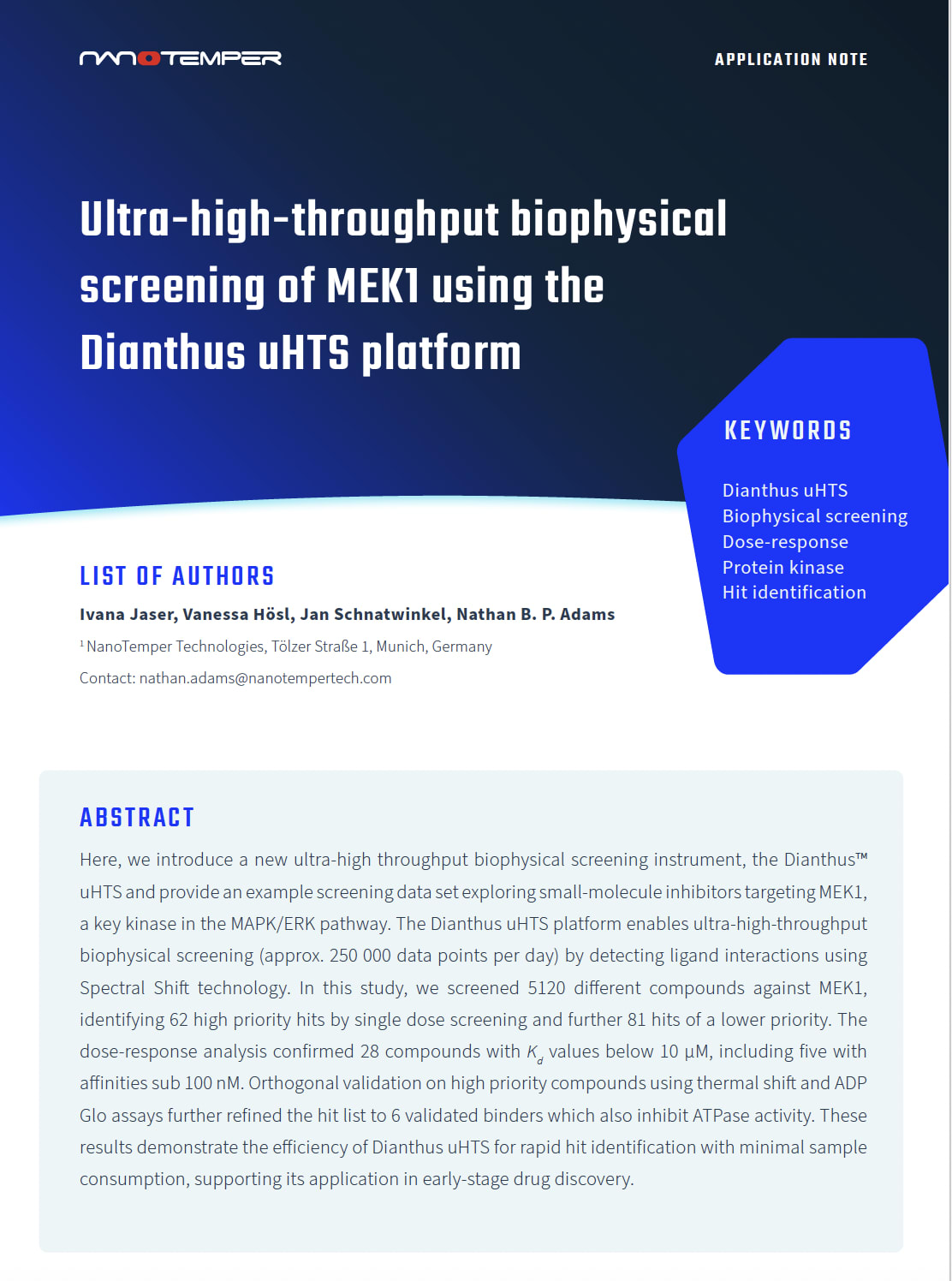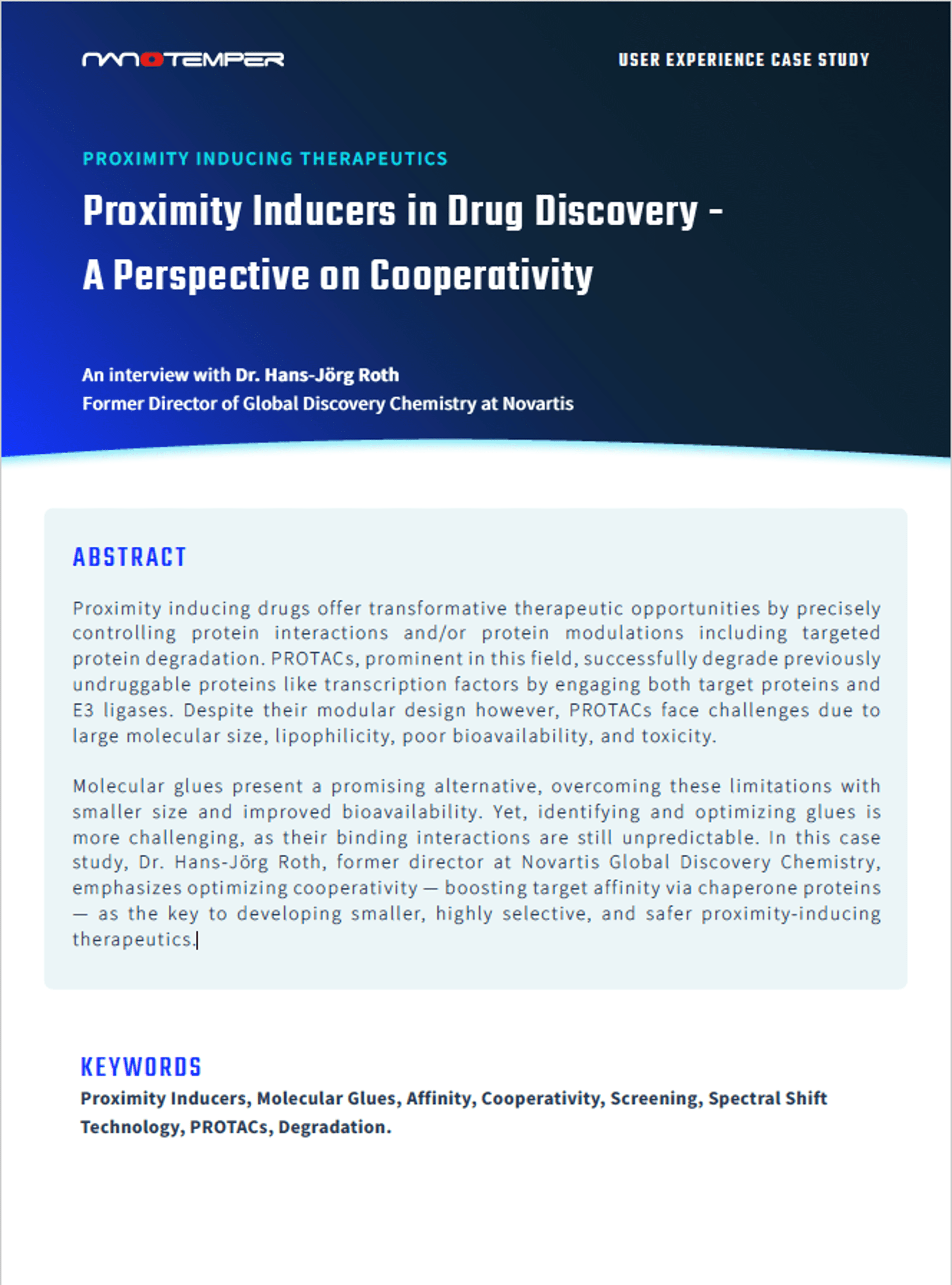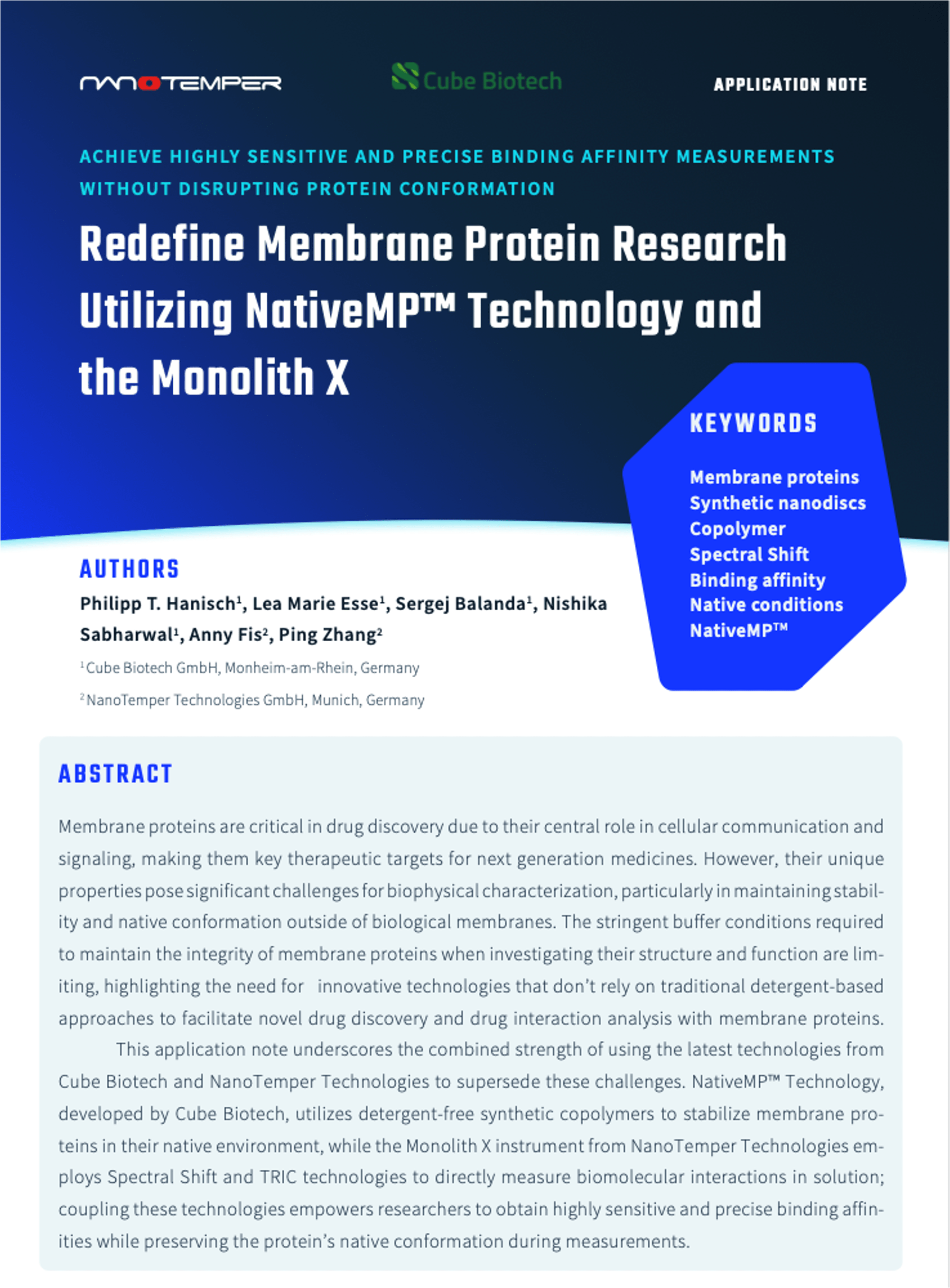Proteins seldom act alone. They interact with a variety of other molecules and also with other proteins to form either homo-oligomers (self-association) or hetero-oligomers (heterologous association). Oligomerization provides diversity and specificity to many cellular pathways and play a central role in the regulation of gene expression, the activity of enzymes, ion channels, receptors, and cell-cell adhesion processes [1, 2]. The biophysical characterization of heterogenous oligomeric complexes is particularly difficult due to the complex nature and quality of the samples, and often the available material is not sufficient for most biophysical methods.
The ribosomal stalk is a heterogeneous pentameric complex directly involved in the regulation of protein translation. This process is often hijacked by toxins like ricin, which stalls translation in the cells by binding to subunits of the ribosomal stalk.
Here we show the versatility of MicroScale Thermophoresis (MST) to study the interaction between a subunit of the ricin toxin and the in-vitro reconstituted ribosomal stalk in its native form. We also compare the MST results to those obtained with other biophysical methods such and isothermal calorimetry (ITC), surface plasmon resonance (SPR) and bio-layer interferometry (BLI). MST allowed the study of this interaction in solution, without the need for immobilization using very little sample.







